San Francisco-based photographer Scott Palmer started chronicling life at his favorite North Beach bar as a side project. He was editing a book which collected the material he’d written while working as a cross-country truck driver. Concentrating on the text, he missed photography and started shooting 35mm at the bar. Soon after, he stepped up to taking large format portraits of life at the Saloon using a 8 x 10 viewcamera. These images turned into Saloonatics, released last year on Forepaw Press, which documents in book form Palmer’s portraits of blues bar life. Palmer sat down with me for a beer in the Tenderloin and told me some of the stories behind the pictures—his commentary follows.
Greg
Greg is the doorman at the Saloon. He is my friend. Right behind the bar is a full recording studio board, and they do a lot of live recordings of the music—and Greg’s the dude. He’s the one on the mixing board. At the Saloon, there’s a basement. The basement is Greg’s lair. There’s a pool table, and racks of stuff. He’s obsessed with technology, and Greg is loved by everyone in North Beach, so they give him stuff. Racks of computers and gadgets. Greg can be abrasive, but he is just a sincere guy, who’s also very private. I insisted to the publisher that he be on the cover of Saloonatics, as the doorman of the Saloon.
Jimmy
Jimmy’s one of those guys that knows where they’ll be open at six in the morning; then once the Saloon opens up, we’ll go over there. I’m not the great cheerleader of Charles Bukowski, but there’s something to be said for the fact that he never apologized for what he was. Jimmy’s like that. “Hey, I have my shortcomings, but I have a good time.” There’s a transcendence. That’s why alcohol is popular. It allows you to leave behind a more stoic orientation to the world. I think Jimmy’s been in San Francisco since gold was discovered up in the Sierra Nevada. That’s his barstool. The Saloon opened in 1861, and that’s where he sat down and he’s never left.
Bob
Bob is from the Central Valley, from Numan. It’s a little tiny town, one of those little agricultural towns that began in the 19th century that are all about farming. He was like “I want to get out of here, play some music.” But you know, it’s like the farm informs his music. One of my heros is the playwright and actor, Sam Sheperd, who’s from Bakersfield. And I think the agricultural and oil legacy of Bakersfield really informs him. In a similar way, I hear the Central Valley coming out of Bob’s guitar.
Jessica
I lived in Paris for a couple years. The painting by Vermeer they call “The Girl With the Pearl Earring” has captivated me for a long time, and I spent an entire weekend on a train just to go see it. And this is my attempt to re-create it. Jessica was a waitress in North Beach. A lot of women are defensive, they’ve been hit on and hit on. So I didn’t take this picture of her alone. This is a fragment of an 8 x 10 negative where she was sitting with a friend, and I cut his ass out.
Bikes
My father was a professional racecar driver. He died in 2005, and afterwards my uncle Larry called me and said “Scott, I have your father’s first motorcycle. It’s a 1947 Harley Knucklehead. I haven’t touched it, it’s been sitting in a barn.” So, I own my father’s first motorcycle. I restored it, lovingly. I don’t even want to know what it’s worth, because I could never get rid of it. Motorcycles, that’s just part of my heritage. Hell’s Angels would come around through my house all the time when I was growing up, it was normal. So these bikes, this is just the latest generation of it. To me, that’s a portrait of my dad.
Sammy
Sammy’s a visual artist. He paints figurative stuff, but leaning towards a De Kooning sort of abstraction, so they’re not realistic or idealized, but they’re beautiful. He was good friends with George Tsongas, one of the famous Beat poets. Sammy sits at Café Trieste, in the corner, and holds court. Everyone loves him because he’s authentic, and he’s a good painter. I went into Trieste one day, and got him to come across the street to the Saloon, where I’d seen him many times before, and sit for this picture.
Friends From Brooklyn
These guys grew up together in Brooklyn, they’ve known each other since they were six years old, since, what, 1929? One of them lives here, and the other, his childhood buddy, came out to visit. I gave them a print, and they loved it.
Cyrus
There’s no uplifting story here. He’s a guy I sometimes give money to. He’s on the sidewalk, begging. But at the same time, he has this dignity. He always buttons the top button on his shirt. I’ve been seeing him out here for fifteen years. I asked him, I said “I’d love to make a portrait of you.” And he said “okay.” One of the best compliments I’ve ever gotten is that this photograph was used in a textbook on photography.
The Saloon
I took these pictures over about ten years, and probably 25% of the people in Saloonatics are dead now. I didn’t photograph them knowing that they were living in a self-destructive manner. I feel honored to have been there to know them and photograph them. In the next couple of months, I’m going to put together a book of portraits, and I’m going to give it away to the friends of the people at the Saloon who are no longer here with us.
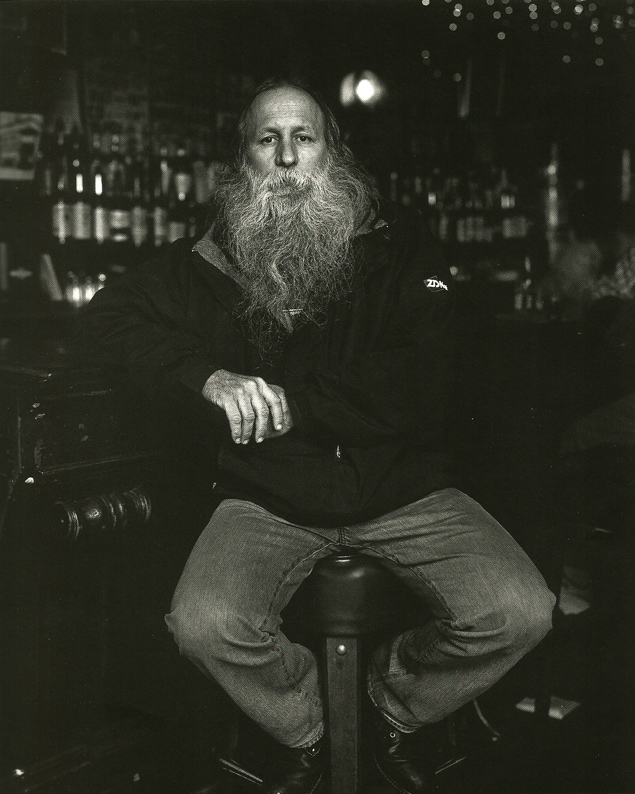



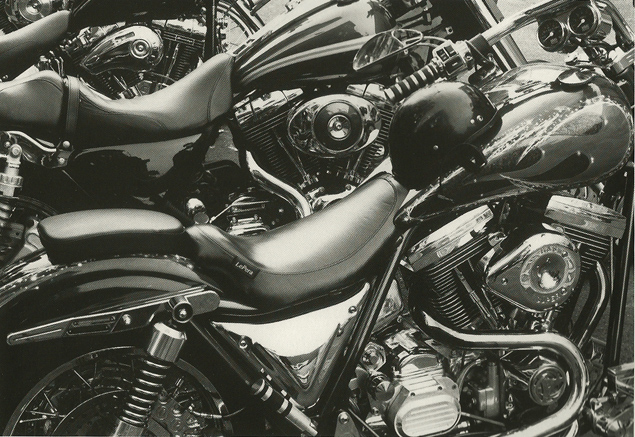

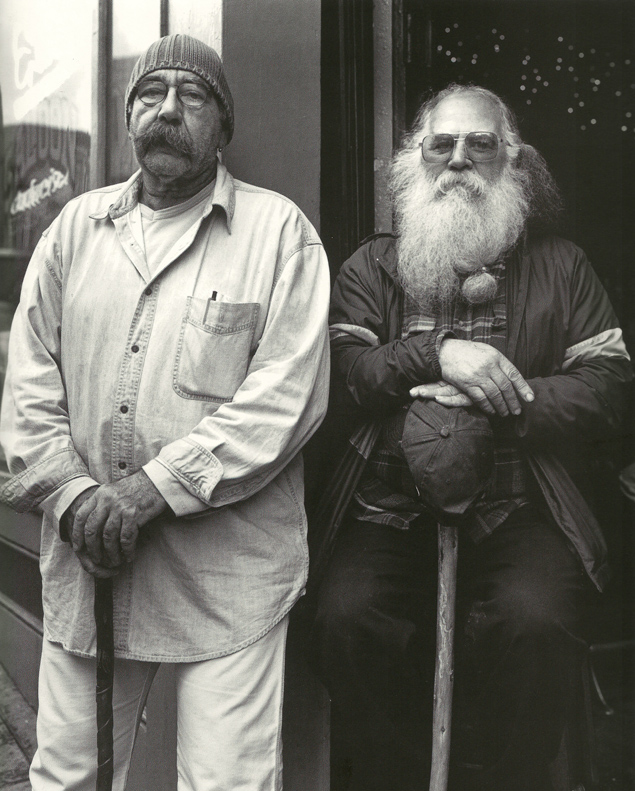






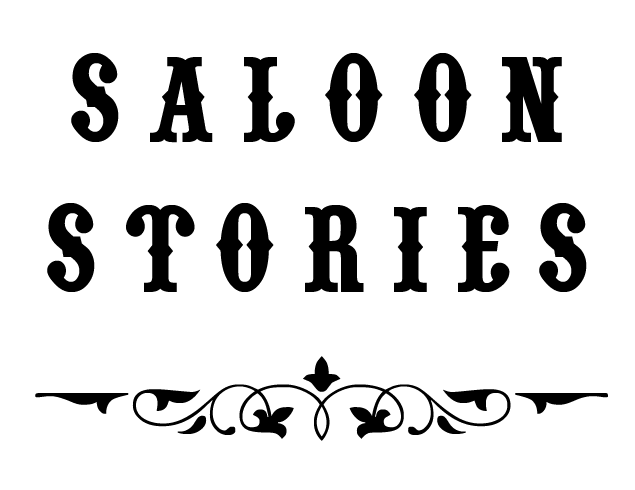



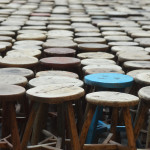
Justin, I know your mom Lisa and she told me about Creosote Journal. Your photos are great (love the Polk Gulch Graffiti). But this is the story I was most drawn to . The portraits are so affecting, and words so poetic and raw. Maybe you could add a link to where readers could see or buy a copy of Saloonatics to the paragraph above?
Laurel
Thanks, Laurel – I’ll look for a link to the book to include.